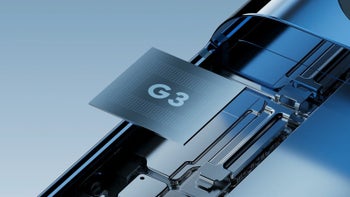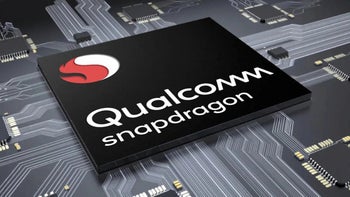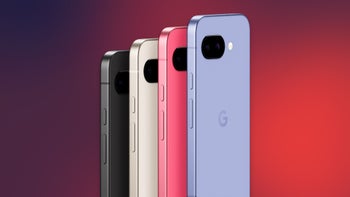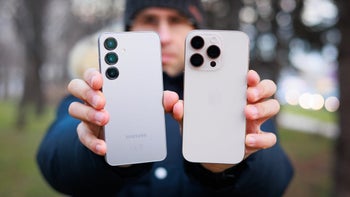Google's Tensor G1, G2, and G3 chipsets explained: Core Pixel features amplified

Probably the most intriguing aspect of Google's latest Pixel phones, the Pixel 8, as well as the previous the Pixel 7 and Pixel 6 lineups, has been the custom Tensor chips.
Following the footsteps of Samsung and Apple, Google has decided to part ways with Qualcomm for its flagship phone lineup and rely on a custom-build silicon that addresses specific needs and fulfills Google's specific AI and machine-learning needs.
Surely, not every aspect of the Tensor has been developed by Google itself, but the chip is nearly a completely in-house affair. The focus of the Tensor isn't raw performance, and admittedly, it's not a synthetic benchmark cruncher; the emphasis is exclusively put on machine learning and the enhanced imaging algorithms that enable unique features on the Pixels.
It seems that we're merely at the first steps of a long journey for Google and its fledgling Tensor line of chips, which honestly is great for the mobile industry and consumers alike. With the hopes of carving out a specific niche for its products, Google seems steadfast on continuing the development of the Tensor platform, and we for one can't wait to see what will happen with it in the future!
Table of contents:
What is the Google Tensor platform?
The "Tensor" name isn't new; in fact, it is shared with TensorFlow, which is Google's all-encompassing machine-learning hardware. Yet, it now graces the custom chip that Google has apparently worked on for four years. It has reportedly been developed in concert with Android's superstar, Samsung, and shares quite a lot of design similarities with the Exynos chipsets that power a vast majority of the South Korean company's international models.
With the Tensor chipset, the rudimentary hardware specs come secondary to the main purpose of the chipset, which is the strong emphasis on on-device artificial intelligence and machine learning, with no reliance on cloud-based AI solutions.
Google Tensor G3
The third iteration of the Google Tensor chipset
The Tensor G3 chipset arrived alongside the Pixel 8 series in October 2023. It's a nona-core chipset, built on Samsung's 4nm manufacturing process. More interestingly, though, the Tensor G3 is strictly a 64-bit only chipset. Thus, it's incapable of running 32-bit apps. The Pixel 7 Pro and Pixel 7 were also 64-bit chips, but technically they allowed some support for 32-bit apps.
It could technically show up on the Pixel 8a as well.
The Tensor-G3It comes with a Cortex-X3 prime core, as well as quad Cortex-A715 and Cortex-A510 cores. The Tensor G3 has a ten-core Mali-G715 GPU, running at 890MHz. Encoding and decoding of up to 8K@30fps/4K@120fps/720p@240fps is also on board, as well as AV1 encoding up to 4K@30fps, a first on mobile. The Tensor G3 in the Pixel 8 also supports UFS4.0 storage, which is around 50% faster than UFS3.1 and definitely helps improve performance across the board.
| Tensor G3 | Tensor G2 | Tensor G1 | |
|---|---|---|---|
| Manufacturing process | Samsung 4nm | Samsung 5nm | Samsung 5nm |
| Prime cores | 1x Cortex-X3, 2.9GHz | 2x Cortex-X1, 2.85GHz | 2x Cortex-X1, 2.8GHz |
| Mid cores | 4x Cortex-A715, 2.37GHz | 2x Cortex-A78, 2.3GHz | 2x Vortex-A76, 2.25GHz |
| Efficiency cores | 4x Cortex-A510, 1.7GHz | 4x Cortex-A55, 1.8GHz | 4x Cortex-A55, 1.8GHz |
| GPU | ARM Mali-G715 | ARM Mali-G710 | AMR Mali-G78 |
| Memory | LPDDR5X | LPDDR5 | LPDDR5 |
| Wi-Fi | Wi-Fi 7 | Wi-Fi 6 Wi-Fi 6e | Wi-Fi 6 Wi-Fi 6e |
| Devices | Google Pixel 8 Pro Google Pixel 8 | Google Pixel Fold Google Pixel 7 Pro Google Pixel 7 Google Pixel 7a Google Pixel Tablet | Google Pixel 6 Pro Google Pixel 6 Google Pixel 6a |
Google Tensor G2 chipset
Announced in 2022, the second generation of Google's custom chip platform
Powering the Pixel 7 Pro and Pixel 7 flagships, the Google Tensor G2 carries on improvements over its predecessor. With a similar architecture but slightly improved performance, the Tensor G2 once again puts emphasis on artificial intelligence and machine learning.
The Tensor G2 uses the same 2+2+4 configuration that the Tensor G1 came with, but with a different set of mid-range cores. Thus, the Tensor G2 now comes with dual high-performance ARM Cortex-X1 cores, two mid-range Cortex-A78 cores, and finally, quad Cortex-A55 efficiency cores. The Tensor G1, on the other hand, used less-efficient Cortex-A76 cores. This is the most likely reason why we generally see an average 10% uptick with the Tensor G2.
Rolling under the Cloudripper name, the Tensor G2 chip is built using Samsung's 5nm manufacturing process. Earlier, there were some nearly certain rumors that Samsung will be using its newer 4nm manufacturing process on the Tensor G2, but it seems this isn't the case.
Graphics-wise, the Tensor G2 is powered by none other than the Mali-G710 GPU, which greatly improves the overall graphics performance in comparison with the Mali-G78 that was powering the Tensor G1 in the Pixel 6 and Pixel 6 Pro. Aside from performing better while being more efficient as well, the graphics unit is also used to offload some core AI processes away from the Tensor G2's main brain.
Tensor G2 versus the competition
| Google Tensor G2 | Qualcomm Snapdragon 8+ Gen 1 | Samsung Exynos 2200 | Apple A16 Bionic | |
|---|---|---|---|---|
| CPU | 2x ARM Cortex-X1 2.8GHz 2x ARM Cortex-A78 2.35GHz 4x ARM Cortex-A55 1.8GHZ | 1x ARM Cortex-X2 3.2GHz 3x ARM Cortex-A710 2.5GHz 4x ARM Cortex-A510 1.8GHz | 1x ARM Cortex-X2 2.8GHz 3x ARM Cortex-A710 2.52GHz 4x ARM Cortex-A510 1.82GHz | 2x Everest 3.46GHz 4x Sawtooth 2.02GHz |
| Manufacturing process | 5nm | 4nm | 4nm | 5nm (TSMC N4) |
| DRAM | LPDDR5 | LPDDR5 | LPDDR5 | LPDDR5 |
| GPU | ARM Mali-G710 MP07 | Adreno 730 | Samsung XClipse 920 GPU | 16-core Neural Engine |
| AI/ML | Next-Gen Custom Edge Tensor Processing Unit | Qualcomm Hexagon Processor | Dual-core NPU & DSP | ML Controller, 16-Core Neural Engine |
| Decode | H.264, H.265, VP9, AV1 | H.264, H.265, VP9 | H.264, H.265, VP9, AV1 | HEVC, H.264, MPEG‑4 Part 2, Motion JPEG (VP8, VP9 unofficially supported) |
Google Tensor G2 benchmarks
Here's a benchmark showcasing the performance differences between the Tensor and its closest competitors. The Tensor is represented by the Pixel 7 Pro, the Snapdragon 8+ Gen 1 by the Galaxy Z Fold 4, the Exynos 2200 by the Galaxy S22 Ultra, and finally, the A16 Bionic by the iPhone 14 Pro Max.
What phones use the Google Tensor G2?
So far, the Google Tensor G2 is only used by the Pixel 7 Pro and the Pixel 7, but the upcoming Google Pixel 7a, which will likely be announced at the Google I/O'23 developer summit. However, this will probably be it for the Tensor G2, as the upcoming Tensor G3 chip will be powering the upcoming Pixel Series 8, coming this fall.
Google Tensor G1 chipset
Announced in 2021, Google's first custom chip
The Google Tensor is an octa-core chip with ARM cores, consisting of two high-performance ARM Cortex-X1 cores running at 2.8GHz, two ARM Cortex-A76 (2.25GHz), and finally, four efficient Cortex-A55 cores running at 1.8GHz max.
First up, this 2+2+4 configuration differs from the 1+3+4 config that Samsung and Qualcomm are respectively using in their recent Exynos and Snapdragon chips, the Exynos 2100 and Snapdragon 888 for example, but in the end, such a difference makes sense. As the Cortex-X1 core are superb at machine learning, it makes perfect sense that Google would use two of those.
Secondly, it probably sticks out that Google uses the older Cortex-A76 cores in lieu of the much newer and more efficient Cortex-A77 or Cortex-A78. The most probable reason for that could be either the fact that there was no more thermal or budget headroom for using the A77 or A78 cores, or Google might have not been deep into the Tensor's development when the Cortex-A77 was launched in 2019.
When it comes to graphics, the Tensor comes with the same GPU that can be found inside your Galaxy S21 Ultra, the Mali-G78 GPU, but better. While Samsung's version of the graphics cruncher had 14 cores, Google is offering 20 GPU cores in its version of the Mali-G78. Theoretically, such a hardware advantage should translate quite well to raw performance.
Google Tensor G1 versus the competition: Specs comparison
| Google Tensor G1 | Qualcomm Snapdragon 888 | Samsung Exynos 2100 | Apple A15 Bionic | |
|---|---|---|---|---|
| CPU | 2x ARM Cortex-X1 2.8GHz 2x ARM Cortex-A76 2.25GHz 4x ARM Cortex-A55 1.8GHZ | 1x ARM Cortex-X1 2.84GHz 3x ARM Cortex-A78 2.4GHz 4x ARM Cortex-A55 1.8GHz | 1x ARM Cortex-X1 2.9GHz 3x ARM Cortex-A78 2.8GHz 4x ARM Cortex-A55 2.2GHz | 2x Avalanche 3.18GHz 4x Blizzard 2.0GHz |
| Manufacturing process | 5nm | 5nm | 5nm | 5nm |
| GPU | ARM Mali-G78 MP20 | Adreno 660 | ARM Mali-G78 MP14 | Custom 4/5 core |
| AI/ML | Tensor Processing Unit | Hexagon 780 DSP | Triple NPU, DSP | ML Controller, 16-Core Neural Engine |
| Decode | H.264, H.265, VP9, AV1 | H.264, H.265, VP9 | H.264, H.265, VP9, AV1 | HEVC, H.264, MPEG‑4 Part 2, Motion JPEG (VP8, VP9 unofficially supported) |
Google Tensor G1 benchmarks
Here's a benchmark showcasing the performance differences between the Tensor and its closest competitors. The Tensor is represented by the Pixel 6 Pro, the Snapdragon 888 by the OnePlus 9 Pro, the Exynos 2100 by the Galaxy S21 Ultra, and finally, the A15 Bionic by the iPhone 13.
What phones use the Google Tensor G1?
So far, the list is pretty short, but we're certain it will grow with time. Initially, we suspected that the Tensor could remain a flagship phone exclusive, but Google decided to use the platform on its affordable Pixel 6a as well in another move away from Qualcomm.
These are the phones using the Google Tensor so far:
Google's Tensor G1 chipset: Features
Camera improvements
Pixel photography has always been AI-assisted and that's one of the main reasons great camera performance has become such a signature Pixel feature, and thanks to the Google Tensor, the Pixel 6-series elevates it to the next level.
There's a whole slew of exclusive camera features that make use of the Tensor chip, namely Magic Eraser, Face Unblur, Motion Mode, and others. You can read more about them in our respective Pixel 6 Pro and Pixel 6 reviews, but here's the gist of it:
Magic Eraser is one of the most intriguing new camera features, allowing you to use computational photography to your advantage and intelligently get rid of distractions on your photos, like random people ruining your architecture shots. Magic Eraser and Face Unblur are definitely two fan-favorite new quality-of-life additions to the Pixel camera app.
Motion Mode is another intriguing addition that lets you emulate long-exposure shots by using computational photography to your advantage. Aside from Motion Mode, the Pixel also comes with Face Unblur, which intelligently sharpens faces that might have come off as blurred in your shots.
Video recording
The Tensor chipset utilizes HDRnet, the component responsible for the signature look of the Pixel photos, and thanks to it is capable of applying HDR effects to each and every frame of a video. This addresses a weak point of Pixel (and Android) phones - video. While it's true that Pixels have always shined in terms of still photography, it probably won't be too subjective to say that video-recording hasn't been a highlight of any Pixel phone so far. Last year's Pixel 5, for example, was quite a compromise in terms of capturing video thanks to its unapologetically mid-range nature, hardly matching the contemporary Galaxy or iPhone flagships in this regard.
Summary & final words
Custom chipsets seem to be all the rage right now, as most manufacturers are either developing or already using such chipsets. Samsung has its Exynos line, Huawei has the Kirin system, and Apple uses Bionic and M1 in its iPhones and MacBooks, respectively. It only makes sense that Google would want to "join" the custom chipset party, as it gives so much flexibility and control when it comes to extra functionalities that can't be achieved with a cookie cutter chips.
However, don't think that Qualcomm, one of Android's hardware darlings, would be in any danger due to the seeming loss of yet another partner in the face of Google. To the contrary, Tensor won't be the exclusive chipset for all of Google's phones in the future. Qualcomm will reportedly"continue to work closely with Google on existing and future products based on Snapdragon platforms".
For now, at least, both the Pixel 6 and Pixel 7 families both seem like perfectly good matches for the Tensor lineup, and we surely can't wait to see how Google is planning on developing its custom chip endeavors going forward.













Things that are NOT allowed: